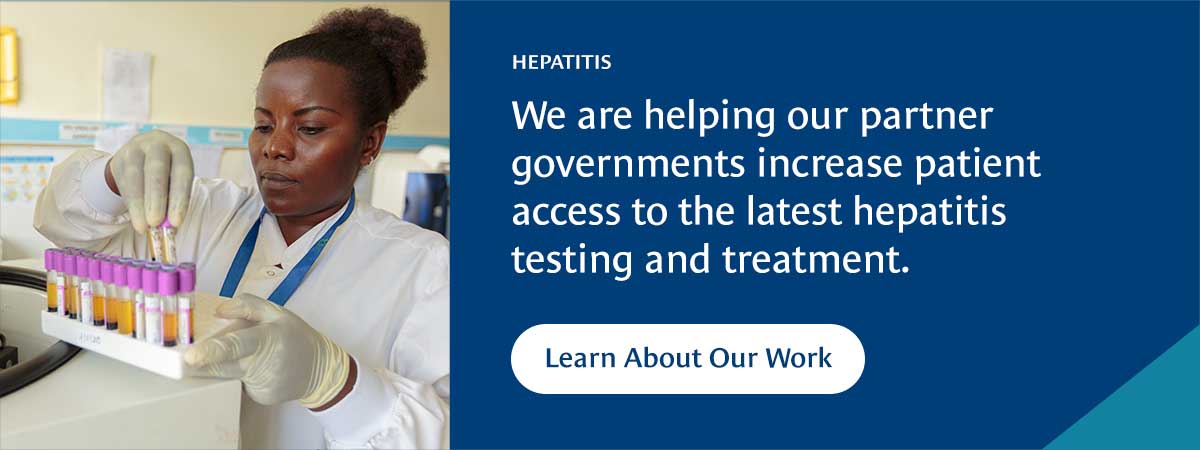Hepatitis C (HCV) affects more than 58 million people worldwide, and a significant number of people with the disease will progress to chronic disease, liver cancer, and death. Although HCV is curable in more than 95 percent of patients with direct-acting antivirals (DAAs), only 9.4 million of those infected have been treated as of 2019.
For those who are treated with DAAs, approximately 5 percent of patients fail initial therapy, a small but important population as HCV treatment is expanded. Currently, there is only one second-line regimen recommended by the World Health Organization (WHO), a branded product that is costly and unavailable in low-resource settings.
CHAI supported an analysis, published in Clinical Infectious Diseases, identifying readily available, generic treatments that have been used as second-line therapy for patients in Egypt, Georgia, and Myanmar, and evaluating treatment outcomes in those patients. The results were encouraging; cure rates, defined as an undetectable HCV viral load 12 weeks after completing treatment, were at least 90 percent across the most common regimens being used. While more robust evidence is needed from clinical trials, these findings suggest that many patients can be cured after being retreated with these affordable, generic treatment options.
This work was supported by funding from the UK Federal Commonwealth Development Office (FCDO) and was conducted in collaboration with the Coalition for Global Hepatitis Elimination (CGHE).






